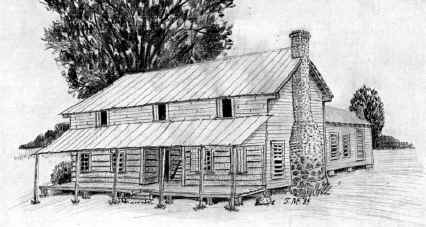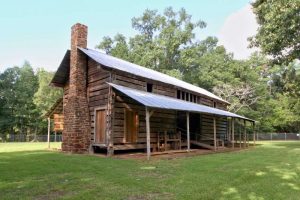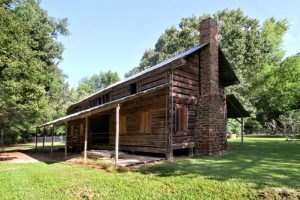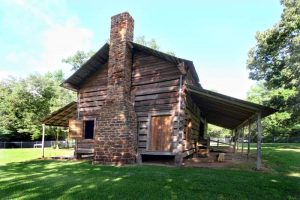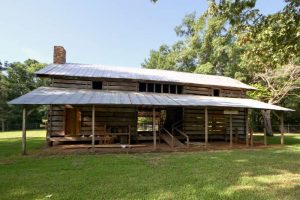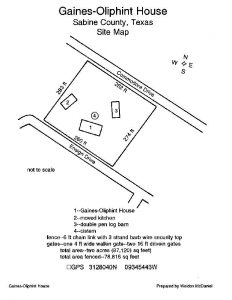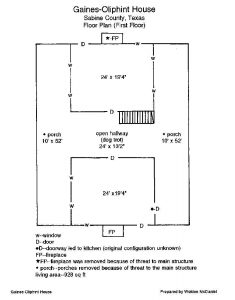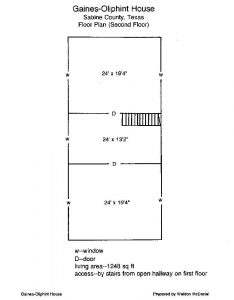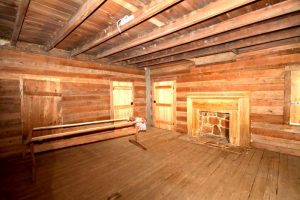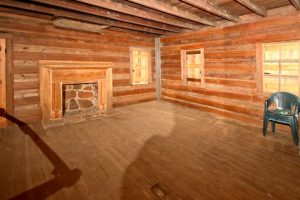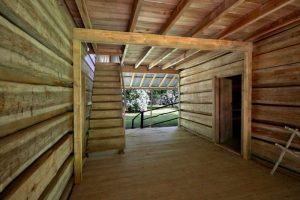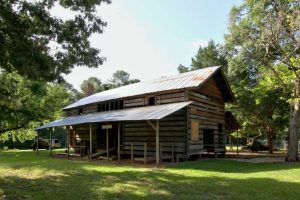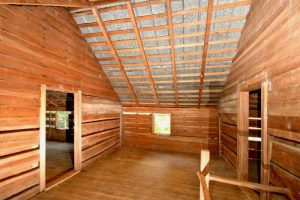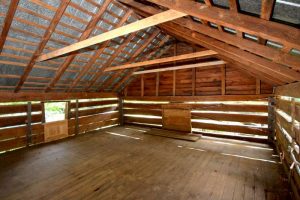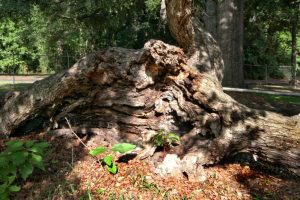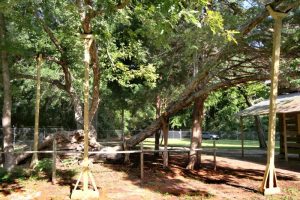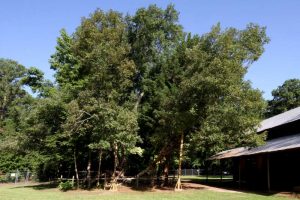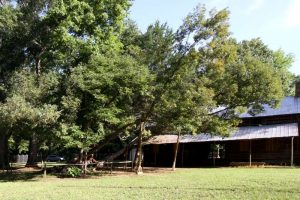The Gaines-Oliphint House – Sabine County, Texas
- Sabine County
- Bronson
- Brookeland
- Cemetery Markers
- East Mayfield
- El Camino Real
- Fairdale
- Gaines-Oliphint House
- Geneva
- Gravelhill
- Hemphill
- Historical Markers
- Jail History
- Longleaf Pines Park
- McMahan's Chapel
- Milam - Causey House
- Pendleton
- Pineland
- Sabinetown
- Robert Cecil McDaniel
- Self-Guided Road Tours
- Go To COMMUNITY Section
~ Please click any image for enlargement ~
The Gaines-Oliphint House was given to the James Frederick Gomer Chapter of the Daughters of the Republic of Texas in 1999 by the SRT (Sabine District Chapter 33 of the Sons of the Republic of Texas). As of May, 2008, the DRT has a master plan for the restoration of the house that was finished several months ago. DRT is now (May, 2008) working with a contractor that does stabilizing and historic restoration.
Chartered on March 8, 1984, the Sons of the Republic of Texas, Sabine District Chapter 33 was gifted in December, 1984 with the Gaines-Oliphint House by Mrs. Tom Foster of Center.
Many historians say the 2-story, double pen log structure was built about 1818 by James T. Taylor Gaines; Tree ring dating done as part of the master plan in 2007 indicates the house might have been constructed as late as 1849. Identical to the Gaines Ferry house that he built for himself around 1815 by slave labor at the Sabine Crossing, the Oliphint House was apparently built for his teenage wife’s parents, the Edmund Norris’, so they might live in the vicinity. Later his cousin cousin Susan jackson lived with her family in the house. The Gaines Ferry site was inundated by waters of the Toledo Bend Reservoir in the late 1960’s and the Oliphint House, an exceptionally fine example of early Texas architecture, is all that remains of this early nineteenth century settlement.
| Several architectural features of the house indicate the carpenter to have been from the tidewater areas of the Carolinas and Virginia; the logs having square notched gravity corners and the house is built on high piers, both being features of early southern building in the U.S. Built of longleaf pine logs which were shaped into planks with an adze and broadax, the house was completely stacked before the windows and doors were cut into the walls. Archeological findings indicate the bricks for the chimney were manufactured on the site from native red clay. The Gaines-Oliphint house provided lodging for Sam Houston, Davy Crockett, and Stephen F. Austin, among others. According to legend, it is the site where pirate Jean LaFitte held his auctions to sell slaves and goods he had taken from captive ships. DIRECTIONS:From Milam, Texas (junction Highway 21 and Highway 87) – Go East on Highway 21 for 6.4 miles to Pendleton Harbor Subdivision (Cedar Grove Road). Turn North on Cedar Grove Road and go 0.1 mile to the STOP sign. Turn East (right) on Harbor Blvd. and go 0.1 mile to Ensign Drive. Turn North (left) on Ensign Drive and proceed 0.2 miles to the Gaines-Oliphint House on the right. | |
| This ancient white oak tree, near the house, is about 325 years old. Unfortunately, it came down during a storm in 1980. However, it continued the struggle for life and has grown quite large in its new configuration… and is aided by supports to keep it going and growing. At one time the tree was about 55 inches in diameter, but much of that part of the trunk has rotted away over time. Legend has it that a number of hangings took place under this tree while Gaines was sheriff and judge (alcalde) in the Pendleton settlement. |





